Distant Nature: Astronomy Exercises
Objectives
This exercise will help you visualize the relationship between the orbits of the planets in our solar system. You will observe the shapes of each planet's orbit, the different orbital periods in relation to one another, and the important positional alignments of the planets in relation to the Earth and Sun.
Equipment/Materials Needed
Stellarium, Scientific Calculator.
Subject Introduction
As you learned in the "Earth's Orbital Motion" exercise, the Ecliptic plane is the plane defined by the Earth's orbit about the Sun. It turns out that all of the planets' orbits lie within 7° of this plane. From the Earth view, the planets lie along the Ecliptic line (+/-). The positions of the planetary orbits, relative to the Earth's orbit, fall into two categories. These are the "Inferior" planets, whose orbits lie inside of the Earth's and the "Superior" planets, with orbits outside of the Earth's. This should not be confused with the terms "Inner/Terrestrial", for Mercury, Venus, Earth and Mars, and "Outer/Jovian" for Jupiter, Saturn, Uranus and Neptune. By now, you should know the order of the planets from the Sun outward as in Table 1.:
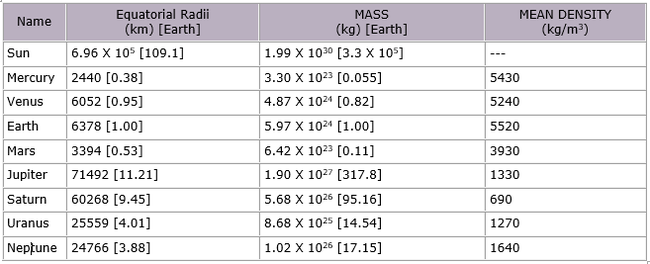
Solar System Data
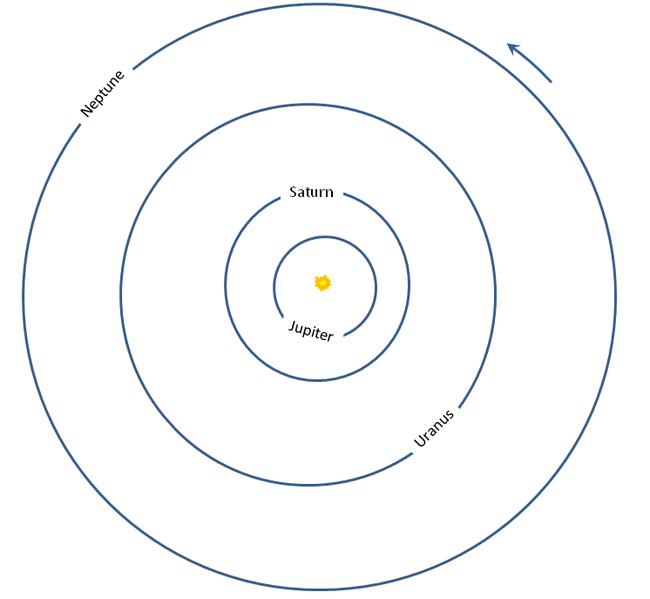
Outer Planets
Figure 1.
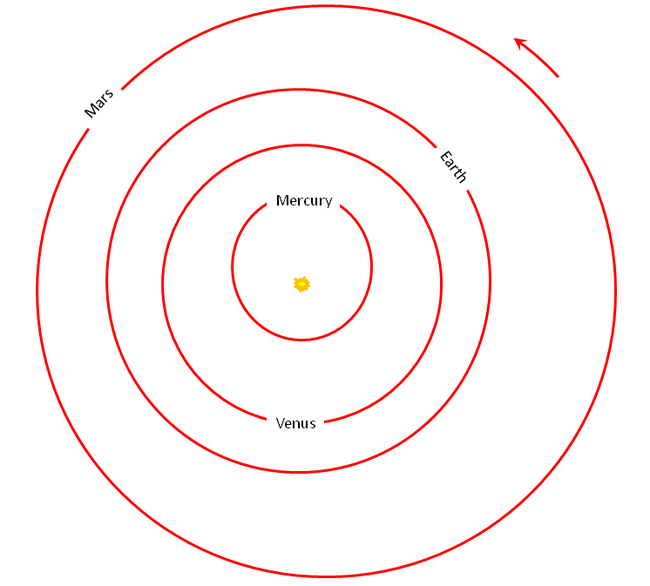
Inner (terrestrial) Planets
Figure 2.
There are several key positional alignments between the Earth, the Sun and each of the two categories, "Inferior" and "Superior" orbits. The basic alignments are "Conjunctions", "Oppositions" and "Elongations". Inferior planets can be aligned in Conjunctions and Elongations, but not Oppositions. Superior planets can be aligned in Conjunctions and Oppositions, but not Elongations. First let’s define these three terms:
- Conjunction - The planet is in the same direction as the Sun, as viewed from Earth.
- Opposition - The planet is opposite the direction of the Sun, as viewed from Earth.
- Elongation - The planet is at its maximum angular separation from the Sun, either East or West, as viewed from the Earth.
Figures 3. through 5. show some examples of these relationships.
Inferior planets
- Elongations
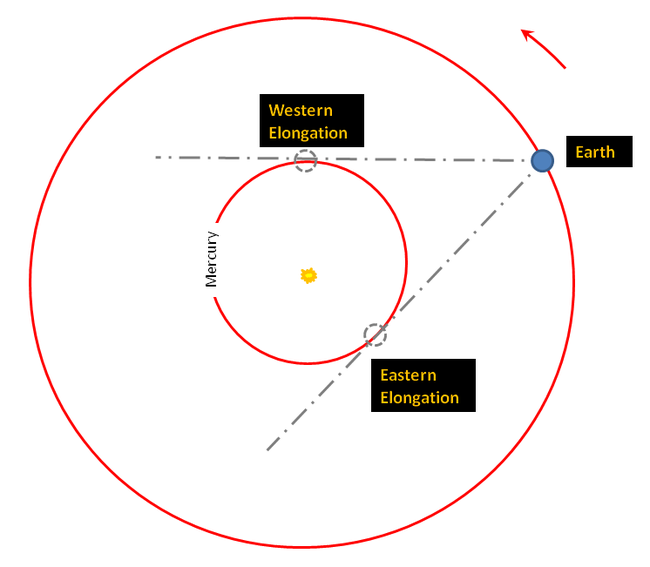
Maximum East and West Elongations of Mercury
Figure 3.
- Conjunctions
- Inferior Conjunction is when the Inferior planet is in line with the Earth and Sun, and is located between the Earth and the Sun.
- Superior Conjunction is when the Inferior planet is in line with the Earth and Sun, and is located on the opposite side of the Sun from the Earth.
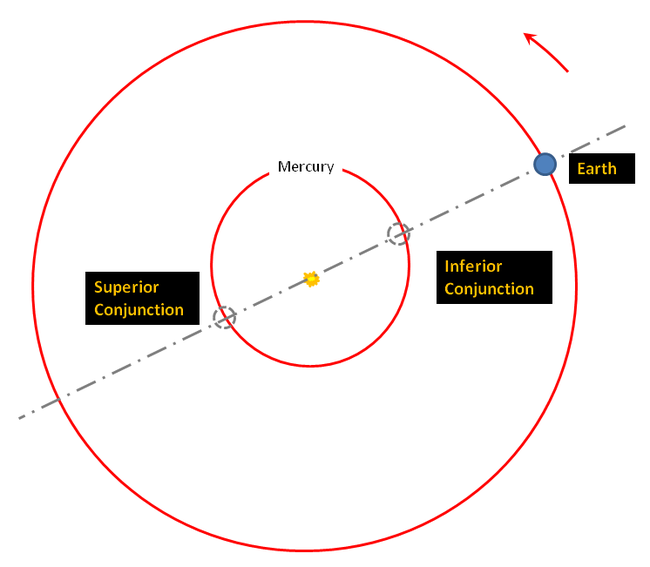
Inferior and Superior Conjunctions of Mercury
Figure 4.
Superior Planets
- Oppositions and Conjunctions
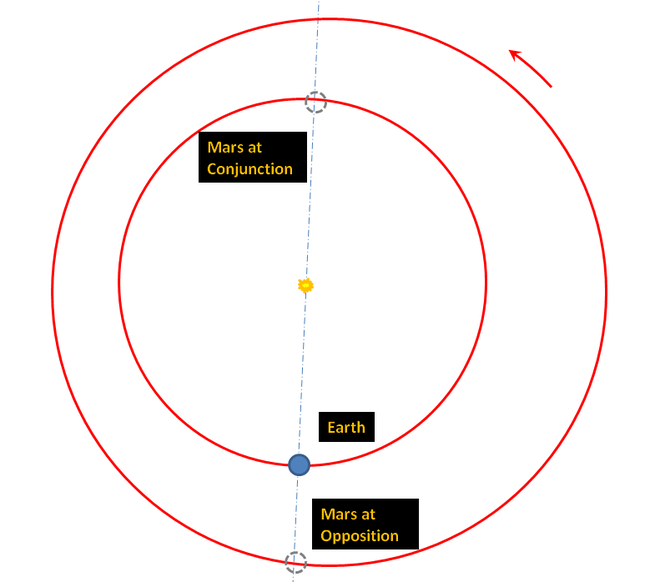
Opposition and Conjunction of Mars
Figure 5.